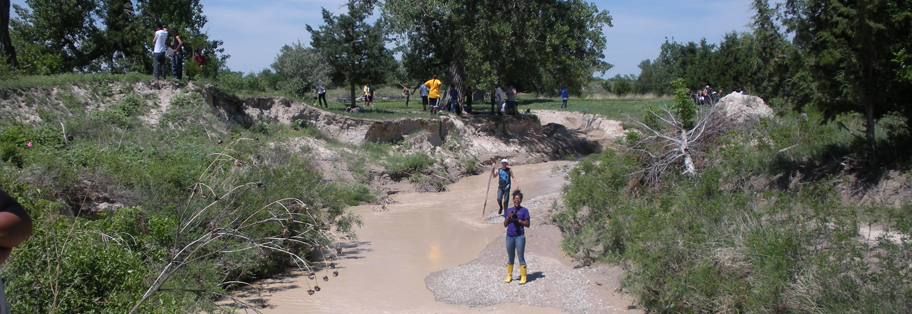Tribal Colleges and Universities
Tribal colleges are institutions of higher learning founded by Indians and chartered by tribes. Most are located on reservations and all serve a predominately native student body. The first Indian-controlled college was established by the Navajo Nation in 1969, but it was, from the beginning, a national movement. More than a dozen colleges were operating by the end of the 1970’s, and over two dozen existed a decade later. There are now thirty-four Indian controlled colleges in ten states, from Alaska to Wisconsin .
Most colleges began with small enrollments and shoestring budgets. In their early days, many operated out of old trailers, rented storefronts, or surplus government buildings. Relying on part time faculty, they typically provided a limited range of introductory courses and one or two-year degree programs in fields ranging from secretarial science and nursing to carpentry and welding. Most also offered courses and degree programs in the language and cultural heritage of the tribe.
Despite these limitations, the colleges proved their value by offering training for work that was available locally and building skills needed for continued study at mainstream colleges. Focusing on these practical needs, they attracted students long overlooked by mainstream colleges and universities, especially adult learners with children and other family obligations. For them, a local tribal college was the only realistic option for higher education. Early research confirmed that most graduates were able to find work and those who continued their studies at mainstream colleges were more likely to earn a four-year degree.
The Role of STEM Education
In their early years, tribal colleges offered few science-related degree programs. Many lacked the classrooms and equipment needed to teach even basic science courses and math instruction typically focused on satisfying general education requirements. STEM-related degree programs were usually limited to entry level positions in health care, forestry, business, and related fields.
However, valuable support from several foundations and federal agencies, especially the National Science Foundation, has led to dramatic growth in STEM programs over the past several decades. Awards made to several colleges in the 1970s by the NSF, for example, helped institutions build and equip lab space needed for core science courses. Broader and more sustained support began in the mid 1990s when the NSF developed a comprehensive program to strengthen K-12 STEM education in the poorest regions of the nation. Called the Rural Systemic Initiatives Program, it engaged with more than a dozen tribal colleges to provide training and resources to local schools serving Indian children.
The depth of the National Science Foundation’s commitment to tribal colleges grew significantly after President Clinton signed an executive order in 1996 directing all federal agencies to increase support to the tribal colleges. The Foundation responded by creating a new program dedicated to building capacity with the tribal college movement. Called the Tribal Colleges and Universities Program (TCUP), it supports development of STEM education within the nation’s tribal colleges, as well as several public universities with significant native student enrollment, most notably the community colleges of the University of Alaska Fairbanks and the University of Hawaii system.
This support has fundamentally transformed STEM education within these colleges. Today—as a direct result of TCUP funding—many tribal colleges now have facilities on par with public two-year or four-year colleges and nearly all have also developed more academically-focused STEM programs. Within the past decade most colleges have added courses and whole new degree options, including associate degrees in mathematics and four-year degrees in information technology, environmental science, and science education. Meanwhile, a recent initiative is now leading to the development of two-year pre-engineering degrees at over a dozen tribal colleges, including some of the nation’s smallest and most isolated campuses.
Tribal colleges have also become leaders in a growing movement to promote undergraduate research. This approach to STEM education emphasizes the value of experiential learning and encourages even first year students to work side by side with faculty on original research. Typically, tribal college students show a special interest in work that serves the needs of tribal communities. Research projects range from documenting contamination of reservation water supplies to designing affordable and sustainable housing for tribal members.

